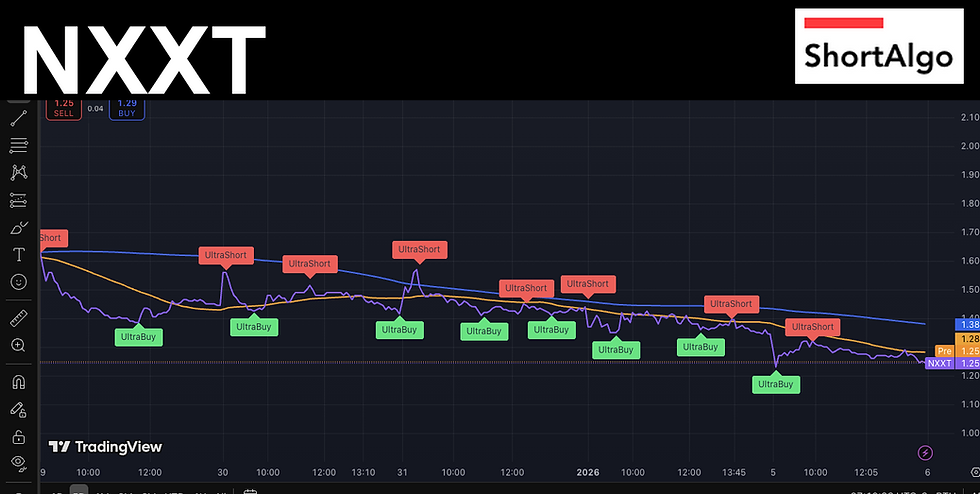What Is Options Open Interest?
- UltraAlgo Trader

- Dec 21, 2022
- 3 min read
Stock Trading Strategies
Options open interest is a measure of the total number of options contracts that have not yet been settled or closed out. It is often used as an indicator of market activity and sentiment, as a rising open interest can indicate that new money is flowing into the market, while a falling open interest can indicate that traders are closing out their positions.
Options open interest can be useful for stock traders in several ways. For example, traders can use open interest to gauge the level of activity in a particular options market or to identify potential trading opportunities. A rising open interest can indicate that there is strong demand for a particular option, which may be a good opportunity to buy. Conversely, a falling open interest can indicate that there is weak demand for a particular option, which may be a good opportunity to sell.
Traders can also use open interest to assess the level of bullish or bearish sentiment in the market. For example, if the open interest for call options (options that give the holder the right to buy a security at a predetermined price) is rising, it may indicate that traders are bullish on the underlying security. Conversely, if the open interest for put options (options that give the holder the right to sell a security at a predetermined price) is rising, it may indicate that traders are bearish on the underlying security.
It's worth noting that options open interest is just one factor that traders should consider when making trading decisions, and it should be used in conjunction with other forms of analysis, such as technical analysis or fundamental analysis.

One thing that many people may not know about open interest for trading stocks is that it can be used to gauge the level of institutional involvement in a particular market. Institutions, such as mutual funds, hedge funds, and pension funds, are often large and sophisticated market participants that can have a significant impact on the direction of a market.
Traders can use open interest data to assess the level of institutional involvement in a particular options market, as institutions tend to trade in large quantities and often leave their positions open for longer periods of time. For example, if the open interest for a particular options market is consistently rising, it may indicate that institutions are increasingly involved in the market and are taking positions in the underlying security.
Traders can use this information to help inform their trading decisions, as the presence of institutional buyers or sellers may indicate a change in the underlying fundamentals or sentiment of the market. However, it's worth noting that open interest is just one factor to consider, and traders should use it in conjunction with other forms of analysis, such as technical analysis or fundamental analysis.
Join our Community with over 17,000 active traders. Our team posts thousands of trading ideas daily covering both interday and intraday trading opportunities. Useful Links | How To Trade What Is Position Sizing When Trading? Is It Effective? What Is Efficient Frontier? Does It Improve Portfolio Performance? What Are Volume Indicators (VWAP, OBV, CMF) for Stock Trading? What Are Volatility Indicators (ATR, Bollinger Bands, Standard Deviation)? What Are Scale-Invariant Momentum Indicators? What Are Momentum Indicators? What Are Trend Indicators? What Is Options Open Interest? What Is The Difference Between Market Depth and Level 2 Data? How To Use Market Depth For Trading Stocks? What Is A Robo-Advisor? What Is Trading Profit Factor? How To Use Profit Target & Stop Loss In Trading? What's Heikin-Ashi & How To Use In Trading? What Is Algorithmic Trading? How To Use Resistance & Support Lines For Trading?


